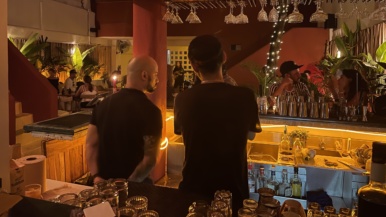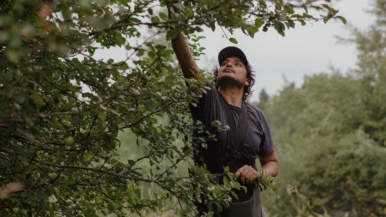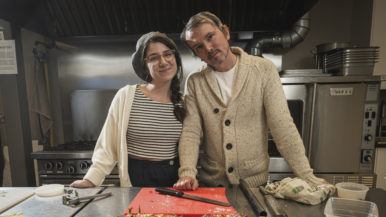I was the top-ranked female MMA fighter in Ontario. Here’s why I walked away from the sport at 22

As a kid growing up in Scarborough, I loved action movies. I remember watching Jennifer Garner in Elektra, playing a badass superhero trained in martial arts, and secretly thinking that I could be a great fighter one day. At 13, I moved in with my mom across the street from a kickboxing gym. I tried my first class and knew I’d found my thing. The moves came naturally to me. I felt powerful.
Soon, I was obsessed with training. I stopped going to parties, and I rarely hung out with friends aside from my boyfriend, another fighter I met at the gym. I enrolled in international relations at Glendon College, but I only went to about 60 per cent of my classes. I spent much of my time criss-crossing the city to work with multiple trainers: one for Brazilian jiu-jitsu, one for kickboxing, two for wrestling. At the time, UFC fighter Ronda Rousey was on the rise. She was glamorous, beautiful, wealthy, famous. My trainers were telling me I could be the next big thing, and I believed them.
I competed in my first MMA fight at 18, in the bantamweight class, the same one as Rousey. Nothing prepared me for the terrifying moment the announcer called my name. Suddenly a fighter was coming at me. Within minutes, she had me in an arm bar, a move that can hyperextend or break the limb at the elbow, and the ref ended it. I lost just like that.
But that first fight was the only one I ever lost. I quickly earned a reputation for getting my opponents to the ground. I’d grab a fighter by both legs and force her to the mat. Sometimes I’d get her in a chokehold called the guillotine, which crushes the trachea, or I’d climb on top of her and punch her until the referee intervened. I never went into a match wanting to hurt anyone, but I knew I had to keep going until the referee stopped me or else I’d be the one getting hurt. People started calling me Gemma Smash. To intimidate other fighters, I’d walk into the arena to a savage song that opens with a woman screaming in a horror movie.

Fights go for three five-minute rounds, but I always finished my opponents in the first—except for once. It was a vicious slugfest. She was a head taller than me and all muscle. As the fight dragged on, I became tired and sloppy. She struck me over and over again in my eyes, nose, jaw, chin. I won, but the white in my right eye had gone blood red, and I was sure I had a concussion. In the car on the way home, I broke into tears. My head was throbbing, my ears were ringing and I ached all over. Could I deal with this kind of pain for the next decade? That was my first moment of doubt.
The second came shortly after, when doctors called me in to discuss the results of an MRI. They showed me my brain scan and pointed to two clusters of white dots called white matter hyperintensities, lesions that only show up in the elderly, those who have degenerative brain diseases and people who’ve had serious head trauma. And on top of the hyperintensities, I had no cartilage left in my knees. The doctors urged me to retire, but I didn’t listen. Fighters take damage; I could keep going.
It wasn’t until months later, when I took a hard kick to the head during training, that I finally asked, “How is this worth it?” Even with the promise of all the money and fame, I’m in the spotlight for five seconds. Sure, the fans cheer me on, but if I get injured, they’re on to the next fighter. Meanwhile, my whole life could be ruined. I was only 22, and I wanted to be a good daughter, sister, maybe a wife and mother one day. I wanted to do something meaningful with my life.

I stopped competitive fighting that day. But my whole identity was wrapped up in being a fighter. I had no idea who I was without MMA. I started thinking about all the good things the sport had given me: self-esteem, assertiveness, a sense of safety when I walked down the street at night. What if I could share those positive aspects with other girls and women? There aren’t many places in the city to learn MMA for self-defence unless you want to train with guys, so I got to work on a plan for Girls Who Fight, a series of workshops I could teach at gyms in the GTA. I’d never taught before, but I figured nothing could be as scary as stepping into the cage. I picked up a few business books, learned the basics and launched a pilot camp for five girls last summer.
Since then, I’ve taught more than 2,000 students, some as young as six. They come for fun or to feel more empowered. One girl I worked with was being bullied at school. She was so depressed and angry, she’d end up punching walls. I started training her one-on-one, not just on moves but on strong body language, eye contact and speaking up. Slowly, she started to trust me and eventually told me about her struggles with her weight. These days, she shows up to class excited and goes home and practises on her punching bag instead of her bedroom walls. Her parents tell me my classes are the only thing that got through to her. It’s an incredible feeling to know I helped turn her anger into something positive. It feels a little like being a superhero after all.
Gemma Sheehan is the founder of Girls Who Fight.
Email submissions to memoir@torontolife.com





